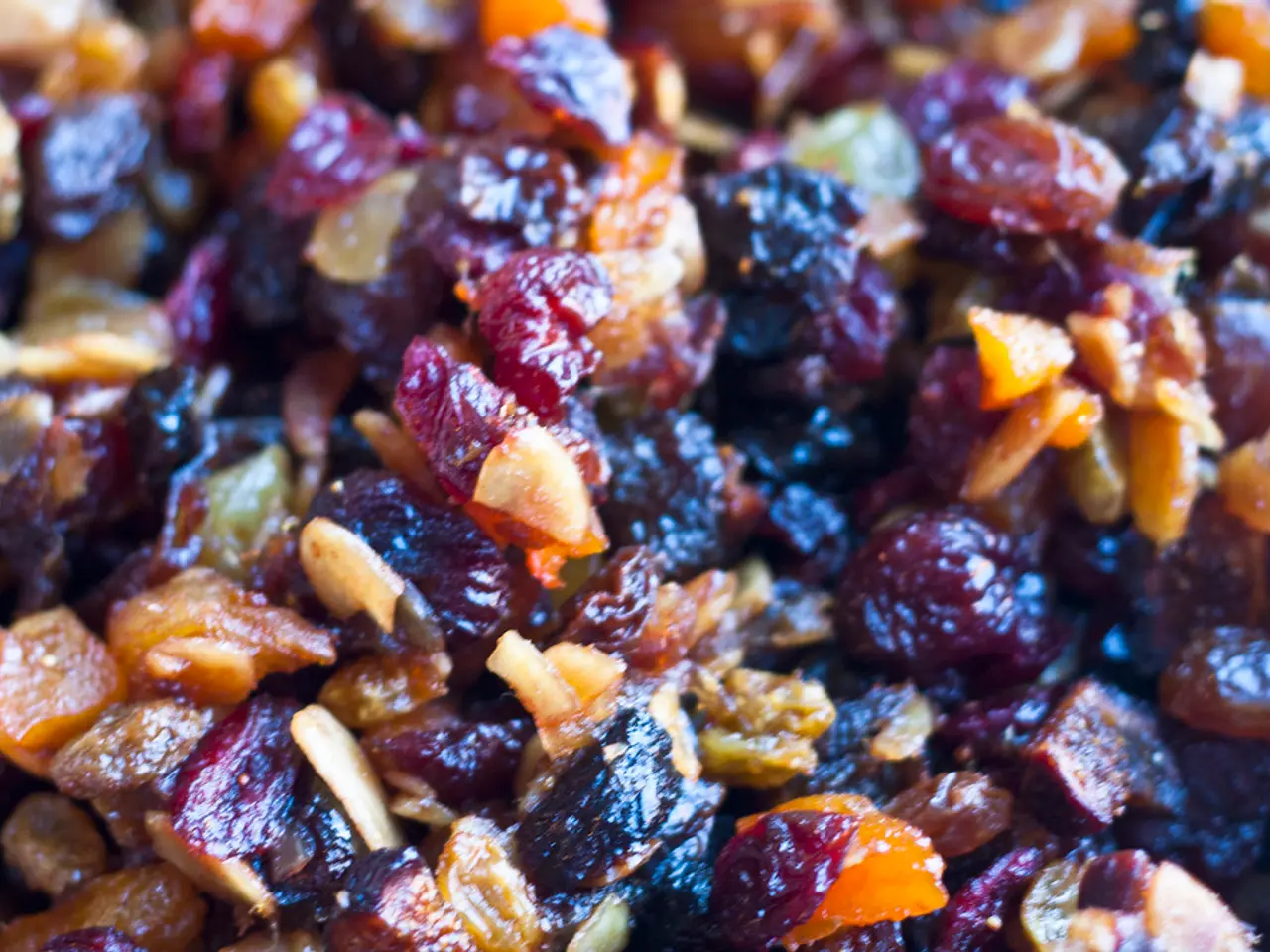Essential Information About Selenium: A Key Element to Keep in Balance (Yet Careful Not to Overindulge)
Selenium, an essential mineral that your body needs but cannot produce on its own, plays a crucial role in maintaining various aspects of health. This versatile nutrient supports metabolic, thyroid, cognitive, immune, and reproductive functions while offering antioxidant protection and reducing disease risk.
One of the key health benefits of selenium is its role in supporting thyroid health. Selenium promotes thyroid function and is converted into selenoproteins, which help regulate thyroid hormones [1][3][5]. Selenium also acts as a powerful antioxidant, participating in antioxidant enzyme systems that neutralize free radicals, thereby reducing oxidative stress linked to chronic diseases such as cancer and heart disease [1][3][5].
Selenium's antioxidant properties extend to brain and cognitive function, boosting immune system health, and enhancing reproductive health. It is crucial for regulating thyroid hormones and metabolism, immune responses including white blood cell function, and has potential benefits in protecting skin and possibly preventing certain neurological conditions [1][3][5].
The recommended daily intake of selenium varies by age and life stage. For adults, it is typically 55 micrograms per day, with pregnant women recommended slightly higher at 60 micrograms per day. Children’s requirements range from 20 micrograms up to 40 micrograms depending on age. The tolerable upper intake level for selenium is 400 micrograms per day to avoid toxicity symptoms [1][2][5].
Selenium is best obtained from dietary sources such as Brazil nuts, seafood, poultry, and whole grains to ensure bioavailability and minimize overdose risk from supplements [2][5]. Excess selenium intake can be harmful, so supplementation above recommended limits should be monitored by healthcare professionals.
Studies have shown an inverse relationship between selenium levels and the risk of certain types of cancer. Selenium supplementation is not typically necessary in North America due to the abundance of selenium in foods grown in the soil. However, if you have concerns about your selenium levels, it's always a good idea to speak with a healthcare provider for safe next steps.
Consuming a single Brazil nut can provide the daily recommended amount of selenium for adults (68-91 mcg). It's not harmful to get some extra selenium in your diet as long as you're not consuming more than 400 mcg a day. However, high levels of selenium can interact with some medications, so it's important to speak with a healthcare provider before starting a new supplement.
People who have HIV, are going through kidney dialysis, or mostly eat locally grown foods from soil low in selenium may have a hard time getting enough selenium. Some research has shown selenium supplementation to be beneficial in people trying to conceive. Selenium deficiency is rare in North America, and unless you're eating organ meats for dinner every day, you're probably not getting too much of it.
Selenium deficiency can cause infertility in men, Kashin-Beck disease (a form of arthritis), and Keshan disease (a type of heart disease). For adults ages 19 and over, the recommended daily amount of selenium is 55 micrograms (mcg) per day. If pregnant, the recommended daily amount is 60 mcg per day; if lactating, it is 70 mcg per day.
In summary, maintaining adequate selenium intake supports various bodily functions while offering antioxidant protection and reducing disease risk. The best way to ensure you're getting enough selenium is to consume a balanced diet that includes Brazil nuts, seafood, poultry, and whole grains. Speak with your healthcare provider if you have concerns about your selenium levels or supplementation needs.
| Group | Recommended Daily Intake (mcg) | Upper Limit (mcg) | |-----------------------|-------------------------------|-------------------| | Adults | 55 | 400 | | Pregnant Women | 60 | 400 | | Children (varies) | 20–40 | — |
References: [1] National Institutes of Health, Office of Dietary Supplements. (n.d.). Selenium. Retrieved October 17, 2022, from https://ods.od.nih.gov/factsheets/Selenium-HealthProfessional/ [2] Linus Pauling Institute. (n.d.). Selenium. Retrieved October 17, 2022, from https://lpi.oregonstate.edu/mic/minerals/selenium [3] Mayo Clinic. (2021). Selenium. Retrieved October 17, 2022, from https://www.mayoclinic.org/drugs-supplements-nutrients/selenium/background/hrb-20066079 [4] Academy of Nutrition and Dietetics. (2016). Position of the Academy of Nutrition and Dietetics: Vegetarian diets. Journal of the Academy of Nutrition and Dietetics, 116(12), 1970-1980. doi: 10.1016/j.jand.2016.09.014 [5] National Academy of Medicine. (2000). Dietary Reference Intakes for Vitamin A, Vitamin K, Arsenic, Boron, Chromium, Copper, Iodine, Iron, Manganese, Molybdenum, Nickel, Silicon, Vanadium, and Zinc. Retrieved October 17, 2022, from https://www.nap.edu/read/9875/chapter/1
Read also:
- Transmissible Infections and Parasites Found in Untreated Berries
- Lung cancer-induced symptoms: Focus on chest discomfort
- Rise in Legionnaires' disease cases in NYC reaches 90, prompting city health officials to propose strict cooling tower regulations
- Suggestion for Long-Term Survival of the Human Race through AI Technology







